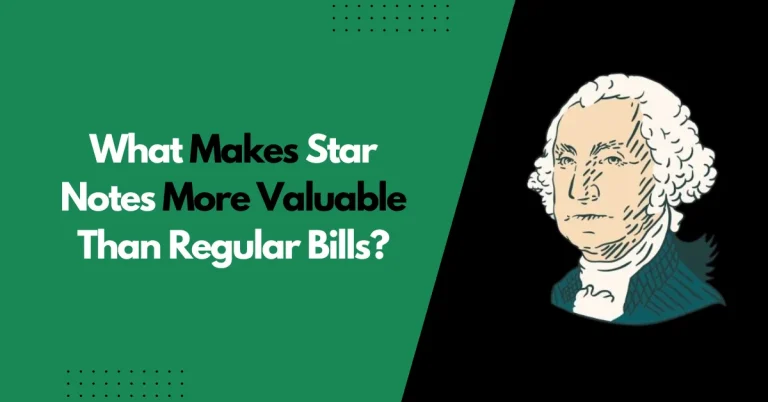Will Star Notes Be Worth Money in the Future?
Many people unknowingly spend star notes every day without realizing their potential worth. These bills might look ordinary, but their rarity could turn them into valuable assets in the future.
What Are Star Notes?
Star notes are U.S. currency printed to replace misprinted or damaged bills. Instead of reprinting the exact serial number, the Bureau of Engraving and Printing (BEP) adds a star (*) at the end of the new note’s serial number. These notes enter circulation like any other bill, but fewer are produced.
According to the U.S. Department of the Treasury, star notes are issued only when needed, meaning their release is limited and inconsistent. This makes them more scarce than regular notes.
Why Are Star Notes Unique?
Star notes differ from normal bills in three major ways:
- Replacement Role: They’re not part of the original print batch but are used to replace defective notes.
- Marked with a Star: A star at the end of the serial number identifies them.
- Printed in Smaller Quantities: The BEP only prints as many as needed, often resulting in fewer star notes than regular notes for each series and denomination.
The U.S. Federal Reserve System doesn’t intentionally create star notes for collector purposes. Their limited print makes them naturally scarce, increasing interest from numismatists (currency collectors).
Will Star Notes Increase in Value Over Time?
The future value of star notes depends on key factors:
1. Rarity by Production Volume
Star notes are printed in smaller quantities. For instance, a run of regular notes may have over 6 million bills, while a star note replacement run could be under 320,000. The lower the print run, the higher the demand. The BEP’s records show that certain star notes from rare runs already fetch more than 10 times their face value.
2. Condition Matters
Crisp Uncirculated (CU) or Extremely Fine (XF) star notes tend to increase in value faster. Worn or damaged notes are less attractive to collectors. Notes in perfect condition can be worth double or more than circulated ones.
3. Serial Number Patterns
Some serial numbers are especially valuable:
- Low numbers (00000001–00000099)
- Repeaters (like 12341234)
- Ladders (12345678 or 87654321)
- Palindromes (like 1234321)
When these patterns appear on star notes, their value often rises significantly due to added rarity.
4. Demand from Collectors
Like all collectibles, value is driven by demand. If the numismatic community continues to value star notes, their worth may rise steadily. U.S. collectors have shown growing interest in rare notes over the past decade, increasing prices across the board.
Examples of Valuable Star Notes
Here are real examples of star notes that are already worth more than face value:
- 2013 $1 Star Note (New York – B Series): With a low print run under 250,000, these can sell for $15–$30 uncirculated.
- 2006 $5 Star Note (San Francisco – L Series): Notes with rare block letters and short runs can fetch over $50 in top condition.
- 1981 $20 Star Notes: Depending on the Federal Reserve Bank and condition, these can exceed $100 in value.
These examples show how scarcity and condition directly affect value.
How to Know If a Star Note Is Valuable?
To determine whether your star note could be valuable in the future:
- Check the serial number: Visit www.uspapermoney.info to look up the print run size.
- Look at the condition: Higher grades (CU, XF) are more desirable.
- Review demand: Search recent auctions and sales on eBay or Heritage Auctions to compare.
Some apps and websites like Star Note Lookup also offer grading services, helping collectors determine the potential resale value.
Will All Star Notes Gain Value?
Not all star notes will become valuable. Common star notes from large print runs, especially in poor condition, may always remain close to face value. For instance, 2017 $1 star notes printed in the millions may only carry minimal premiums.
However, notes from rare print runs or with unique serial numbers are more likely to appreciate. Like rare coins or vintage stamps, the combination of scarcity and condition drives long-term value.
Tips for Keeping Star Notes for the Future
If you plan to keep star notes as long-term assets:
- Store in protective sleeves: Avoid folds and moisture to maintain grading quality.
- Keep records: Note the year, series, condition, and Federal Reserve district.
- Avoid handling: Oils from fingers can degrade paper quality over time.
- Track market trends: Follow auctions and collector platforms to understand rising demand or changing interest.
These practices help protect the note’s value and may increase its resale price.

